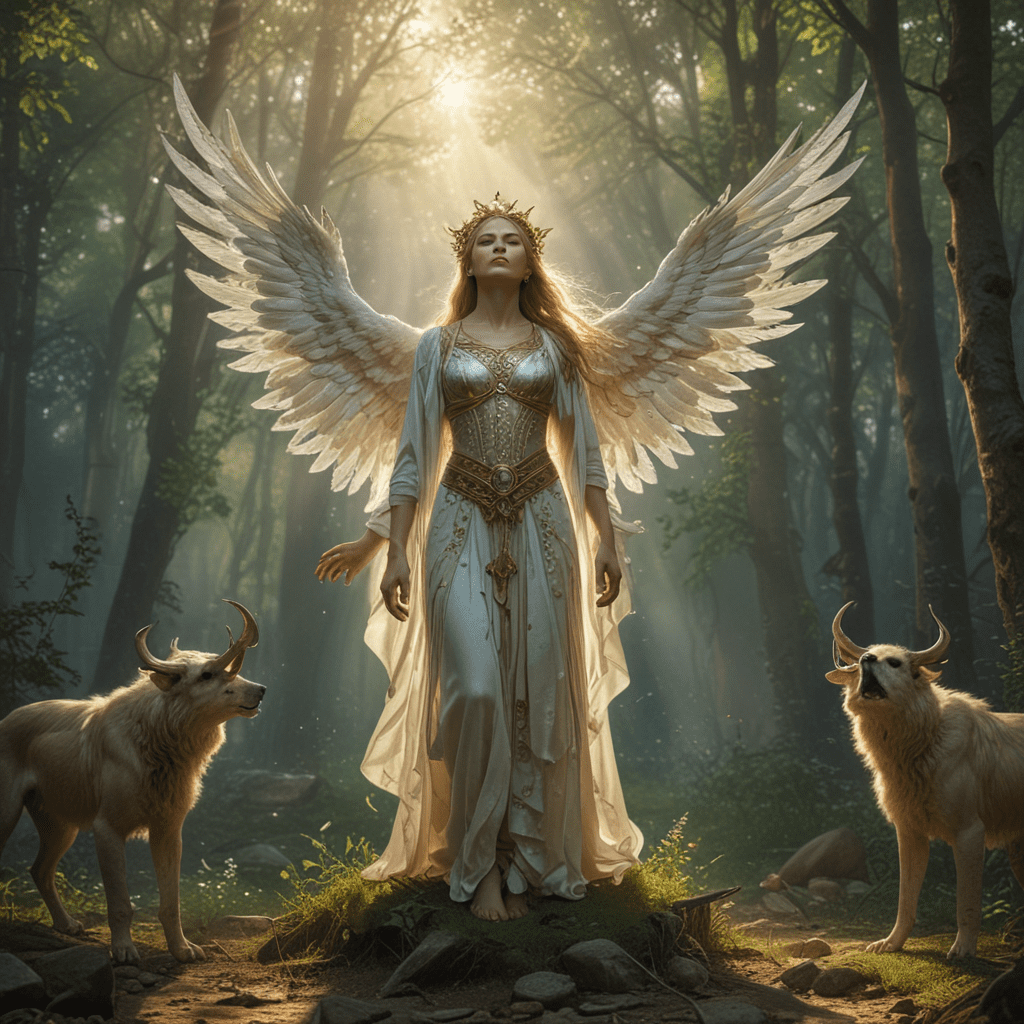Korean Legends: The Heavenly Maiden Myth
The Heavenly Maiden: A Recurrent Theme in Korean Folklore
In the rich tapestry of Korean folklore, the celestial figure of the Heavenly Maiden stands out as a captivating and recurring theme. These divine beings, often depicted as ethereal and beautiful, grace the pages of countless legends, tales, and myths, offering fascinating glimpses into the Korean cultural imagination and spiritual beliefs. These stories, passed down through generations, are a testament to the enduring power of myth in shaping cultural identities and values.
The Essence of the Heavenly Maiden Myth: A Celestial Being Descending to Earth
The Heavenly Maiden myth, in its core, tells the story of a celestial being who descends from the heavens to Earth. These maidens, often described with exquisite beauty, supernatural powers, and exceptional grace, represent the divine feminine and the allure of the celestial realm. Their journeys to Earth are often driven by curiosity, a longing for human experiences, or even a divine purpose.
Variations on the Theme: From Divine Punishment to Romantic Encounters
The Heavenly Maiden myth unfolds in various forms, each adding unique layers to the narrative. In some versions, the maiden's descent to Earth is a punishment for a transgression in the heavenly realm. In other stories, she falls in love with a mortal man, leading to a forbidden romance that challenges the boundaries of the divine and the human. The stories also explore themes of sacrifice, transformation, and the consequences of crossing the line between celestial and earthly domains.
Common Motifs: Forbidden Love, Betrayal, and the Tears of Heaven
The Heavenly Maiden myth is often infused with recurring motifs, which add depth and emotional resonance to the narratives. Forbidden love, a common theme, highlights the conflict between divine and human desires. Betrayal, often by a mortal lover, underscores the fragility of trust and the potential for heartbreak. The image of the Heavenly Maiden's tears, representing the sorrow of the heavens, underlines the enduring consequences of broken promises and the eternal yearning for lost love.
The Heavenly Maiden’s Transformation: From Divinity to Human Form
One intriguing element of the Heavenly Maiden myth is the transformation she undergoes. To experience the human world, she often sheds her celestial form, adopting human guise. This transformation symbolizes the blurring of boundaries between the divine and the earthly, allowing exploration of the complexities of human emotions and experiences. The maiden's journey highlights the beauty and fragility of human existence, as well as the power of love and loss to transcend earthly limitations.
The Symbolism of the Heavenly Maiden: Purity, Beauty, and the Divine Feminine
The Heavenly Maiden embodies a wealth of symbolism within Korean culture. Her celestial origin represents purity, innocence, and the untainted beauty of the heavens. She often embodies the idealized feminine, symbolizing grace, elegance, and ethereal beauty. This image of the Heavenly Maiden reflects the Korean reverence for the power of the divine feminine, highlighting its capacity for both love and sorrow.
The Heavenly Maiden's descent to Earth is often seen as a bridge between the celestial and earthly realms, representing the potential for divine intervention in the human world. Her presence embodies a sense of hope and possibility, suggesting that the divine can touch even the most mundane aspects of human existence. This symbolism reflects the Korean belief in the interconnectedness of the spiritual and the physical, and the enduring power of the divine in shaping human destiny.
Theories on the Origin of the Myth: Ancient Shamanistic Beliefs and Celestial Observations
The roots of the Heavenly Maiden myth likely lie in ancient Korean beliefs and practices. Shamanism, a prominent aspect of Korean culture, involved communication with the spirit world, including celestial beings. The concept of the Heavenly Maiden likely emerged from these shamanistic beliefs, reflecting a profound connection to the heavens and the divine realm.
Furthermore, ancient Korean observations of the cosmos likely played a role in shaping the Heavenly Maiden myth. The celestial bodies, particularly the moon and stars, were viewed with awe and reverence. The Heavenly Maiden, a celestial being, may have been inspired by these celestial observations, embodying the beauty and mystery of the heavens.
Influences from Chinese Mythology: The “Tiannv” (Heavenly Maiden) of Chinese Folklore
While the Heavenly Maiden myth holds a prominent place in Korean folklore, it is important to note the influence of Chinese mythology. The concept of the "Tiannv" (Heavenly Maiden) is a recurring theme in Chinese folklore, and its influence on Korean tales is undeniable. The Tiannv, much like the Korean Heavenly Maiden, represents a celestial being who descends to Earth, often to engage in romantic entanglements with mortals.
The similarities between the two mythologies highlight the cultural exchange that existed between Korea and China throughout history. The Heavenly Maiden myth, while deeply rooted in Korean traditions, also reflects the shared cultural heritage of East Asia, where celestial beings and their interactions with the human world have long captivated the imagination.
The Heavenly Maiden Myth in Korean Art and Literature: From Paintings to Folktales
The Heavenly Maiden myth is woven into the fabric of Korean culture, finding expression in art, literature, and folklore. Paintings depicting the Heavenly Maiden often portray her as ethereal and delicate, adorned with celestial garments and surrounded by heavenly light. These paintings reflect the Korean aesthetic appreciation for beauty and grace, and their enduring fascination with the celestial realm.
Folk tales and legends are another prominent medium for the Heavenly Maiden myth. These stories, often passed down through generations, have preserved the myth for centuries, offering insights into the Korean understanding of love, loss, and the divine. The Heavenly Maiden, through these narratives, serves as a symbol of the enduring power of myth in shaping cultural identities and shaping collective understanding of the world.
The Enduring Legacy of the Heavenly Maiden: A Timeless Symbol of Love, Loss, and the Divine
The Heavenly Maiden myth continues to resonate with audiences in Korea and beyond. Her story, with its themes of forbidden love, divine intervention, and the enduring power of the human spirit, remains a timeless source of inspiration and wonder. The Heavenly Maiden embodies the complexities of human emotions, the beauty of the natural world, and the allure of the divine. Her legacy speaks to the enduring power of myth in shaping cultural identities and illuminating the universal human experience.
FAQ
Q: What is the Heavenly Maiden?
A: The Heavenly Maiden is a celestial being who descends from the heavens to Earth, often with a divine purpose or to experience human life.
Q: What are some common themes in the Heavenly Maiden myth?
A: Common themes include forbidden love, betrayal, transformation, and the consequences of crossing the line between the divine and the human.
Q: What symbolizes the Heavenly Maiden's tears?
A: The Heavenly Maiden's tears symbolize sorrow, broken promises, and the eternal yearning for lost love.
Q: What is the origin of the Heavenly Maiden myth?
A: The myth likely arose from ancient shamanistic beliefs about the divine realm and the influence of Chinese mythology.
Q: How does the Heavenly Maiden myth manifest in Korean culture?
A: The Heavenly Maiden is depicted in paintings, literature, and folklore, reflecting Korean beliefs about the divine feminine, beauty, and the celestial realm.




